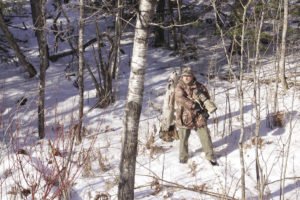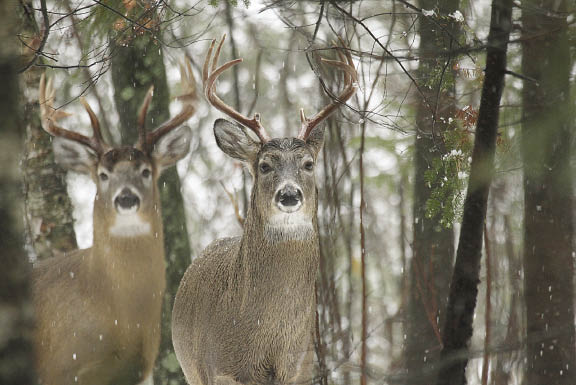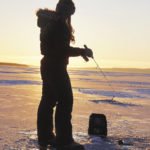We Northlanders are a hardy bunch, and so are the critters that share our region. I’m sure we all have friends and relatives that live in warmer climes who remark that they don’t know why we live here.
We live here because we love it, love the bright starkness of a snowy winter scene, the incredible silence of the winter woods, and enjoy following the tracks of wildlife after a fresh snow. Though some may think that winter is a slow time for wildlife photography, it actually is one of my busiest seasons.
Without the barrier of leaves, with the tall grass beaten down by snow, animals are much easier to see and photograph, and the labyrinth of tracks they leave are a virtual encyclopedia of which animals exist in that neighborhood. Birds are more easily spotted, and with food sources concentrated, such as on conifers, the hunt for them can be dramatically easier.
Winter does present challenges, both for you and your photography equipment.
Staying warm in winter can be tough, but dressing in layers is one method to beat the cold. And like a hunter, you should wear clothing that is quiet. You need to be able to hear animals and birds and minimize how much they can hear you – rustling nylon is amazingly loud in the winter woods. I lean toward traditional fabrics and insulation – wool pants are my favorite. I like down-insulated jackets or parkas because not only are they warm, they breathe better than synthetics, and the compressibility of the down makes the garment less restrictive when worn in the vehicle. Camouflage is always a good idea for wildlife photography.
Waterproof, insulated footwear is a must. While pack boots are the warmest, I find them awkward for both driving and walking quietly, so I have switched to wearing hunting boots with at least 800 grams of Thinsulate-type insulation. The narrower profile of these boots make for less cumbersome driving, and they fit snowshoe bindings more easily.

The biggest challenge is keeping your hands warm. You need to be able to feel the shutter button and be able to manipulate all those other buttons and rotate dials, too. I wear a warm glove or mitten on my left hand, since that one is usually just holding the lens barrel, and a thin liner glove on my right. I then tuck a chemical hand-warmer in the glove on the back of my hand. Reverse this if you’re left handed.
Even when in your vehicle, you may need to bundle up. A car or truck makes a wonderful photo blind, because many animals are so used to seeing them that they virtually ignore them. A great many of my best shots were taken right out the truck window. But — and this is very important — you can’t have the engine (and thus, heater) running. First, the sound of the engine can alert your subject. Second, the vibration of a running engine can cause camera shake. Third, heat shimmer escaping your window from a hot passenger compartment will ruin many images. I routinely open the passenger window while shooting to avoid this, and so the inside of my truck is generally the same temperature as the outside. I sometimes carry an old sleeping bag or parka to throw over my lap and legs while shooting from a vehicle.
I get many questions about whether our extreme cold will harm your photo gear. I’ve been out in 20 below zero weather without causing any damage. In fact, since virtually every camera is now digital, the biggest worry I once had — film breaking in the cold — has been eliminated. You may occasionally get a weird error message from your camera, and that is almost always due to a frost buildup between the lens and the camera body (if using a dSLR). Usually detaching and reattaching the lens solves the problem.
Batteries don’t last as long in the cold, so make sure you have a spare, and keep it in an inside pocket where it’ll stay warm — and when a battery runs down, move it into an inside pocket, too. You may be surprised that it really wasn’t completely dead, just frozen.
Be careful not to rapidly bring an ice-cold camera into a hot vehicle or house, or it may fog up the lens. Not a big deal if it is just the lens surface because you can just wipe it clear. But sometimes you’ll fog the interior of your lens, and there is no way to quickly clear that so that you can continue shooting. You’ll need to bring that lens indoors, and set it in a sunny window or near a radiator for several hours before that fog will clear.
Despite the challenges of photographing in winter, it is a great time for those who love to photograph wildlife.
This story was originally published in the Dec.-Jan. 2013 issue of Northern Wilds Magazine.



